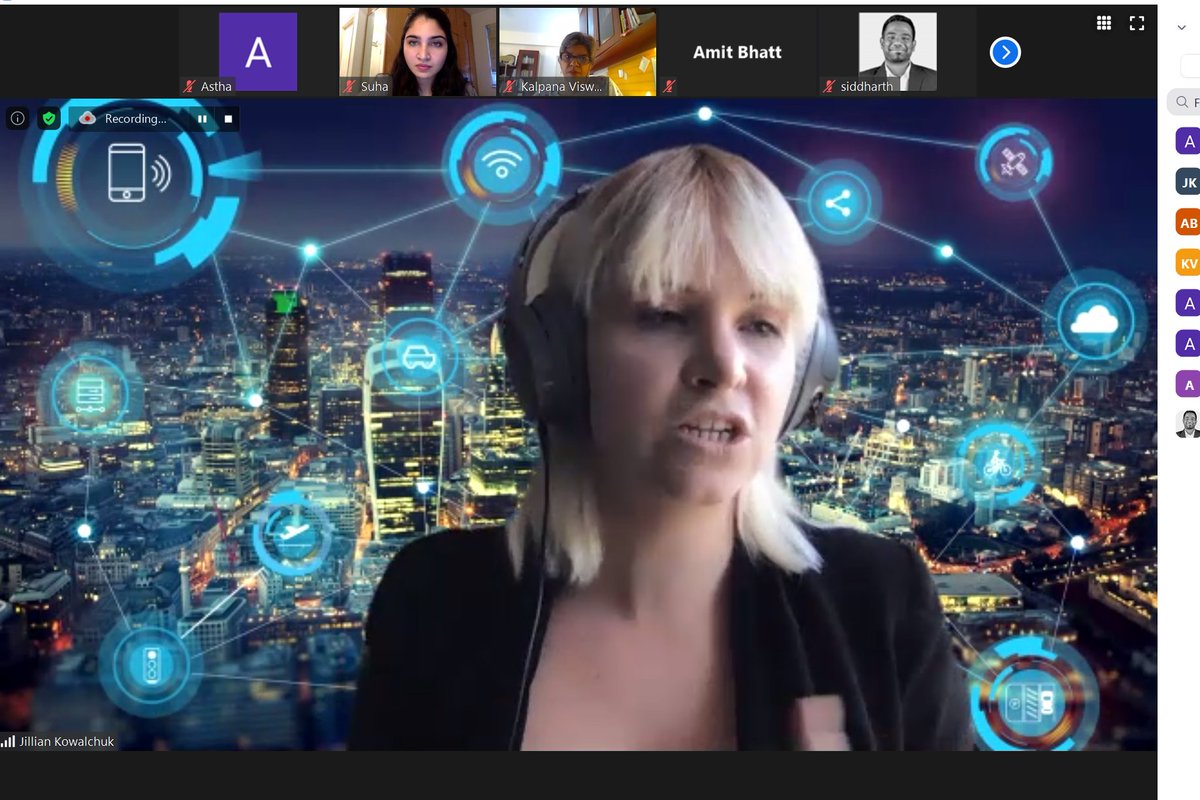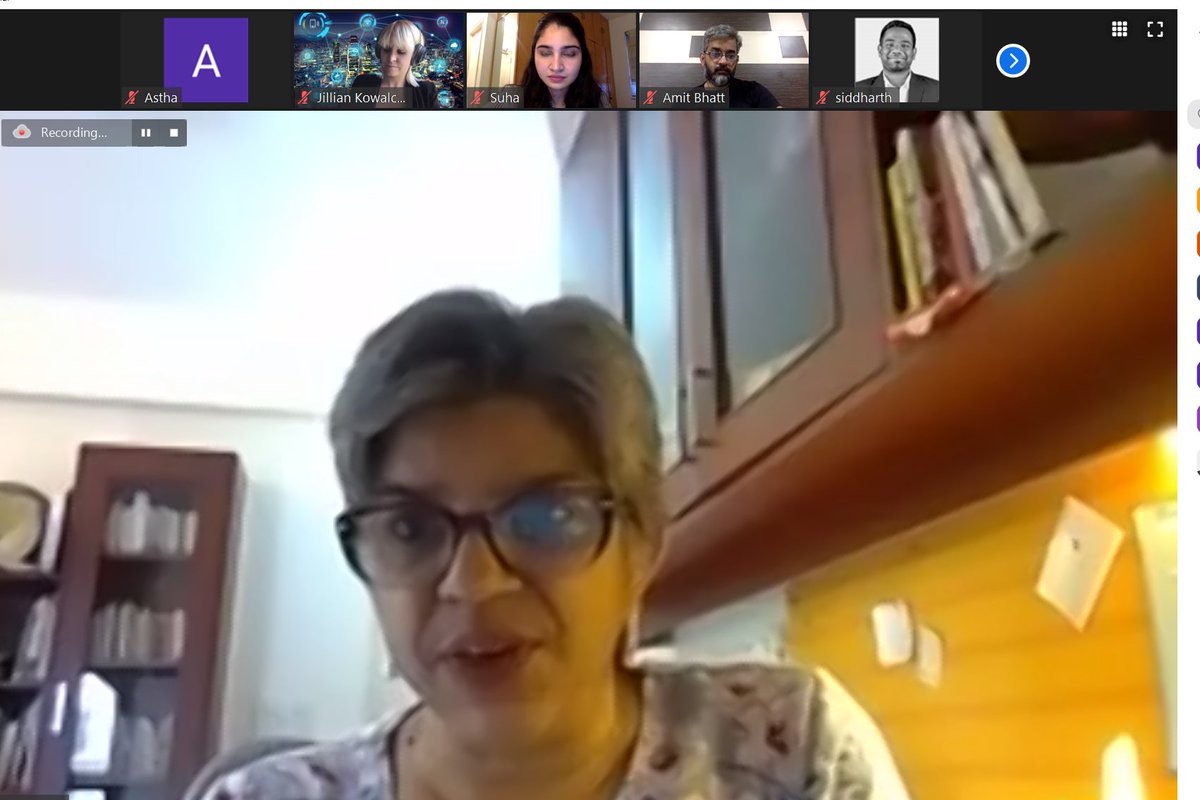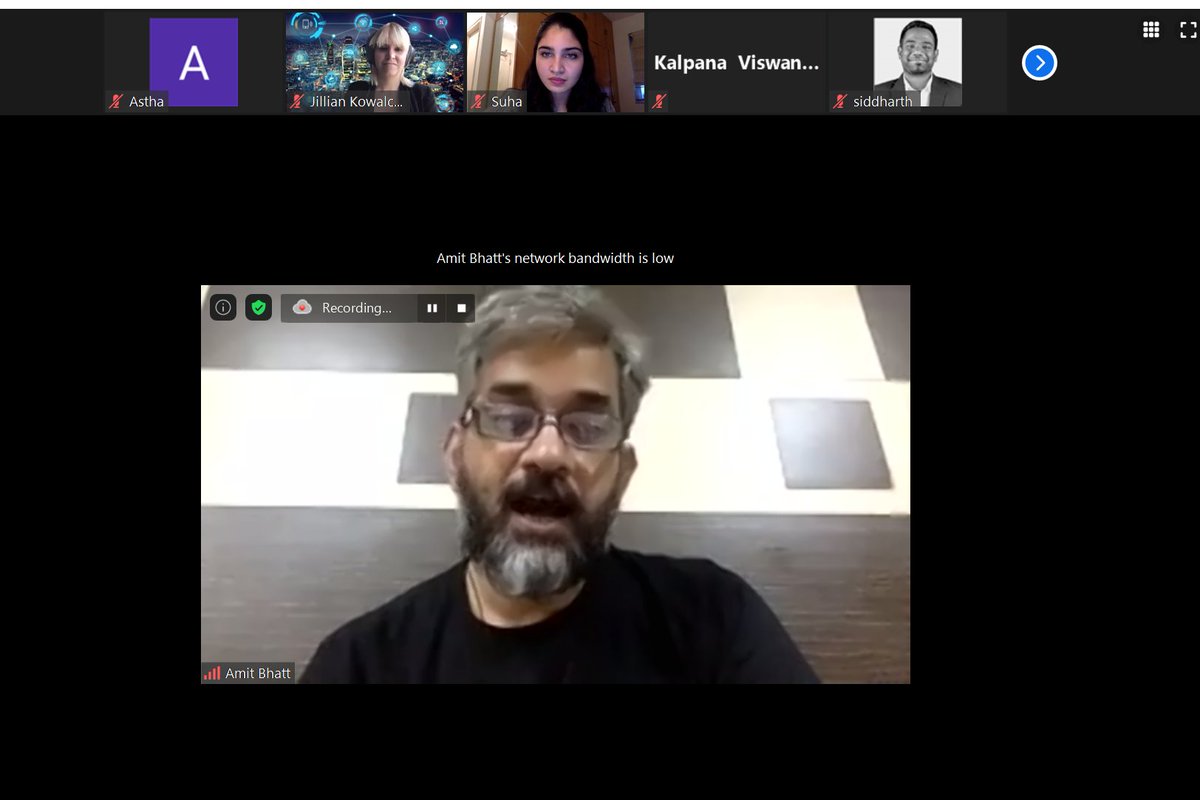Hi! I am @KapoorAstha - I will be live tweeting the session on Women and Data Stewardship starting now! Our panellists are on, @viswanathkv @amitbhatt4u and @kowalchuk_jill and @seaasaw is chairing #aaptidatadeliberations
If you have registed, join now - if you have not registered, DM us - and we will send over the login details.
The big questions we will be discussing is what is the role of data in making cities more accessible for women, and how we can share this data responsibly
Civil society has led the way to responsible data sharing, and envision how we can create systems of governance for data such that it is accountable, transparent and also empowers women to make better decisions on how their data is used and shared
First question, to all panellists, how do we define #safety in the context of cities, and how has data been used to improve this?
Kalpana (KV) - what is women& #39;s safety encompasses to me, enhances women& #39;s rights to the city - it is a framework of rights and not a framework of protection. It is not just about apps, tech, cameras but about how we expand women& #39;s access to the city
KV - fear prevents women from accessing the city equally and in this context, the stakeholders for safety are a wide range of people - institutions, planners, municipalities, mobility providers. It is not a conversation between women and policing
KV - there is a tonnes of data, there is so much data - we do not know who has it, and how much there is. The government has a lot of data, but we find it hard to get it accurate local level crime data for example. We get it at an aggregated level and that might not be useful
KV - and then there is data that civil society organisations collect, user data and other available sources. But is this data representative or is it defined by who has access to smartphones?
Amit Bhatt (AB) - average trip data for women is 1/1.5 in India, but in more developed countries it is more than double. This is because we have very poor workforce participation, only 27% participation, and safety and security is linked to this
AB - We studied women& #39;s safety and public transport in bhopal. data around violence against women, for instance, there is no data. Why we don& #39;t have any data, its there is low reporting, and even for those who want to report are unable to because of a lack of support.
AB - safety is a question of perception, and perception data is next to impossible.
Jillian (JK) - definition of safety is challenging. There are broad strokes, and many stakeholders. Safety, traditionally, falls into physical risks, and women& #39;s safety gets blanketed with that. We need to look at the women& #39;s definition of safety
JK - fear of crime, perception, sexual harassment all comes into it. UK is a different landscape than India. We have data stores, the @MayorofLondon champions good data practices on public transport
Jk - we need more disaggregated data. We need to work with different stakeholders, we try to create a demand/lifestyle approach to data - with @safeandthecity we tried to build safety as something you can do while you are navigating.
JK - how we have captured categorical information, what does sexual assault even mean? We are trying to shape into our narrative, and have an educational component and understand the experiences people have
KV - the challenges of collecting crowdsourced data, and several barriers to women& #39;s reporting. Firstly, stigma and then the trust and faith that something is going to happen, and then the concern about what is sexual harassment. There is such a variation.
KV - where are you going to report crimes on a bus? There are no opportunities. We do not know the magnitude of the problem and crowd-sourcing can help shed light on this - it can help understand where the problem is, then the qualitative aspects can help understand this better.
KV - how can we make a bus rides safe? Data and interventions can answer this. @WRIIndia is collecting data and then @safetipinapp and @safeandthecity can help design the interventions. We need to put data together with different kinds of stakeholder actions.
KV - Women are willing to report, they are saying that they are facing harassment. Questions of privacy are not imminent but tracking apps do worry women, even though these apps are designed for emergencies but then because a tool of surveillance for women by parents, partners
KV - where is the CCTV data that is being collected in our cities, where is this going? CCTVs data can lead to moral policing, and we do need some data stewardship to unpack some of these complex questions
AB - even big agencies that are collecting the data, there are questions of what are you doing with this data? For example, electronic ticketing machines that buses/metros use are a huge source of data on mobility but we do not know how to use this well for planning
AB - in bhopal, we asked drivers to share their views on safety and they all said safety is not an issue and at least 30% of them said that women are responsible for their own safety. Mobility and safety impacts women& #39;s ability to participate in the economy
JK - we have been cautious with the draw backs of crowd sources data, we have smartphone only which means that there may be some bias in the data. Marginalised communities may not be reporting as frequently.
KV - when we began safety audits, we were told that the poor areas will be stigmatised as more unsafe, because of lack of infrastructure. We measure the physical infrastructure, like lights, sidewalk etc. We also measure social infrastructure and how people use spaces.
KV - low income areas are low on physical infrastructure but not on social infrastructure. But we have to think about "Community harm" and how data is used to improve one part of the city and not stigmatise it, we work actively with the government to improve a neighbourhood
KV - the data becomes an empowering tool for the community that can use it with their local representatives to advocate for better services
JK - stakeholders need to be engaged. @TfL ran a campaign which showed that a majority of women were harassed. Police recognises that there is a need for different kinds of data to address this issue
JK - we do know the city better because of the data, and work with the community to help them protect themselves better. So we not only work with the police but also with the community. We are building trust and accountability from within.
AB - state capacity is obviously an issue. In the transport authorities, we realise that women are not represented. No institutional mechanisms to mainstream women& #39;s issues within the government
AB - walking to the bus, waiting at the stop, boarding the bus - all of these are gendered experiences which are not understood by the government/mobility providers. We need a director of safety and security, focused on women& #39;s safety.
Question to all panellists: Since the trans & non-binary communities’ struggles for the right to the city of has been especially hindered by data, how do you place them in your approach towards data for gender equality? What are the challenges you face, especially in India?
.
.
KV - we need a bottom-up data generation to understand intersectionality better. Example, women toilets are not available so the condition of sexual minorities is very poor.
KV - class issues, informality mean different sets of vulnerabilities. Even in the experience of the city is defined by the type of transport you use. @kowalchuk_jill mentioned, our cities are designed for able-bodied CIS males, but these are not people who inhabit our cities now
KV we need to nuance who is inhabiting our cities. We need to uncover this. When you present data, you are giving voice to a group that didn& #39;t have a voice before. Once you are able to build on that, even if its one data point. We have to grab moments of history to push change
Question - What would be your recommendation to smart cities if you could suggest one intervention that helps put in place safeguards on how data is handled (perspective of women’s safety and women’s rights)?
JK - crowdsourcing bottom-up data generation can help shape our cities and have these voices flow into how we design cities is important. How can we embed this engagement and the tools that facilitate this?
JK - but our data needs to be reliable, because we do not want to codify biases. We have to be able to think about solutions that are both data, and not data related.
AB - city planning is definitely seeing huge empirical evidence in what makes a safe city. But how the city needs to arrive at better planning, and this requires a different system - we are planning for able-bodied men and imp to get women to be part of the solution generation
KV - we have to make sure that we work with a bunch of stakeholders, on the grassroots to make sure that we bring in different stakeholders. We need a framework to hear these voices.

 Read on Twitter
Read on Twitter




